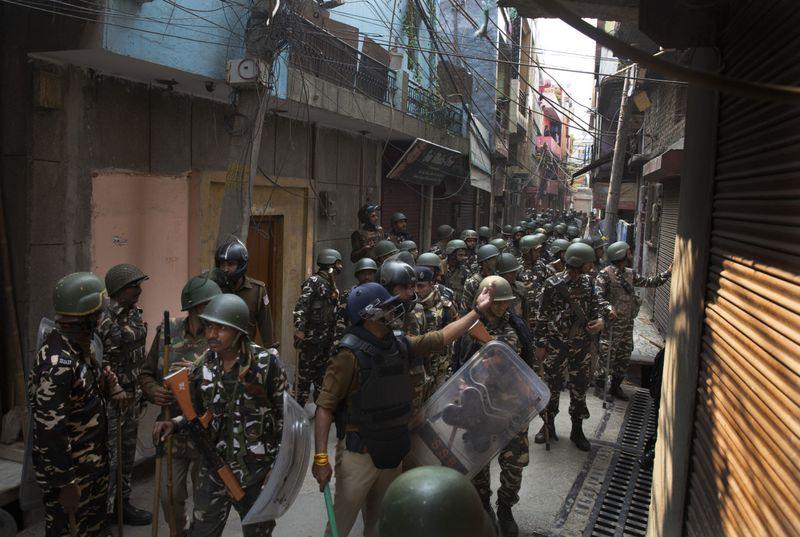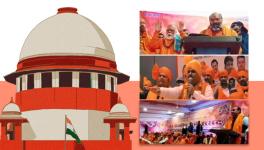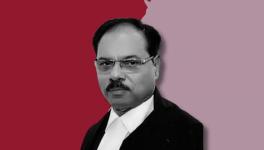From Embers of Delhi Riots, New Solidarities Can Emerge

Photo Credit: AP
The riots that broke out in North-east Delhi on Sunday are an inevitable consequence of the vicious campaign led by the Hindutva brigade and its followers against the anti-CAA protesters. Their offensive has fostered a climate of hate in the Capital and beyond. They have been painting the protesters as anti-Hindu and inspired by radical Islam, which threatens to drive a deeper wedge between the communities.
The anti-CAA protests are the first time that the BJP had to deal with democratic and peaceful mass protests ever since it came to power after the 2014 Lok Sabha election. These protests are a completely new and unexpected situation for the Hindutva outfits as well, accustomed as they are to project anti-Muslim images through their venomous speeches, with scarcely a response emanating from the community.
Even so, the speeches delivered by BJP leaders during the recent Delhi Assembly election were unparalleled. The speeches instigated their supporters to attack the protesters at Delhi’s iconic Shaheen Bagh anti-CAA protest site. Steeped in sheer bigotry, Kapil Gujjar and Gopal Sharma fired at the protesters. The former openly promoted his exclusivist Hindutva-inspired view of India when he was caught, telling TV channels that the country ‘belongs to Hindus’.
Yet, the threats, the abuse and even actual violence has not deterred the protesters. Even after the violence that lasted in Delhi for four days, peaceful and democratic anti-CAA protests still continue and are inspiring protests across the nation.
What has also made it tough for the Hindutva supporters is that these protests are led mostly by women. This has made hardline Hindutva supporters feel increasingly frustrated, for they could find no way out of the situation, especially after their electoral defeat in the Delhi Assembly election.
It is in this context that that the finger of blame for recent events in Delhi have started pointing at the formal and informal institutions related to the government. In 2002, the same forces had justified the anti-Muslim Gujarat riots by projecting the Godhra incident as the trigger. By the same logic, ironically, history might judge the violence in North-east Delhi as inspired by peaceful protests.
Observers are right to be puzzled by Delhi turning violent while the United States President Donald Trump was on an official tour to the country (including the Capital). This itself could be a strategy of the conspirators to the violence. The lack of professionalism of Delhi Police during the riots can now be explained away as the forces being distracted by and busy in taking care of the stringent security requirements of the visit by the POTUS. Trump’s visit can even be used to justify three days of silence of BJP’s top leaders during these riots. In fact, rioters got a more or less free hand for four days.
The political aspect of the current violence in Delhi are also a departure from the past. If the RSS is unable to deal with peaceful protests, the secular parties, whether in power or Opposition, do not seem to know what to do with majoritarianism or its violent consequences. Instead of putting their cadres on the streets to quell the disturbances, the newly-elected AAP government also, at first, refused to respond to the clashes. Some reportedly argued that the affected areas are not in Assembly seats their party had won in recent elections, while some AAP MLAs met the Lieutenant-Governor of Delhi and organised a sit-in at his residence demanding action. Delhi Chief Minister Arvind Kejriwal went to Raj Ghat and appealed for peace. Many reminded him of the tour that Gandhi had taken to Noakhali in the wake of severe communal riots in 1946, but Kejriwal is not Gandhi and this comparison is unfair.
The violence in Delhi carries the imprint of the RSS regime. It bears the signature of its idea of ‘New India’. In other words, it reflects the Hindutva vision for a Hindu rashtra in which the Muslims and other minorities will not be allowed to assert themselves. In New India, in the name of social harmony, Muslims would be treated as second-class citizens.
The fact is that the anti-CAA protest at Shaheen Bagh had become iconic over the last two months. It had started attracting liberal Hindus, atheists, Dalits, Sikhs, Christians, and others, in ever-growing numbers. When North-east Delhi erupted in flames, these newly-forged relationships passed the test of solidarity. Reports came of Dalits and Sikhs not only assuring Muslims of safety, but opening their temples and gurdwaras to shelter them. Many Hindu families sheltered Muslims in their homes. And Muslims ensured that Hindu temples are not damaged by mobs. These give our democracy a big reason to hope.
Constitutionalists tend to focus on justice, equality and liberty as India’s guiding principles, but fraternity can sometimes outshine all of them. It can be a beacon of democracy, especially when anarchy prevails and people are left to fend for themselves.
This time, the Muslims have also stood against the unjust push back in the form of CAA in a more organised way. True, their effort can only be humble in scale. True also that the assertion of Muslims is an ongoing process, not a sudden phenomenon. However, it has got recognition this time that Muslims are refusing to back down from their demand to repeal the unjust and discriminatory citizenship law and related proposals.
During the Delhi violence, images of Muslim households pelting stones went viral. It is often ignored that angry and violent mobs were standing at their doors too, against which the Muslims needed to defend themselves. This has created a buzz among sympathisers of the RSS and BJP that Muslims are attacking Hindus. In fact, this narrative reflects the desire and expectation of the attackers and their supporters that Muslims must not resist violence.
At least 42 have died and more than 200 are reportedly injured in the clashes in Delhi, which only just seem to have come under control. The community-wise breakup of deaths and injuries is not fully known yet, but it is a fact that the mosques, homes and businesses of Muslims have especially been targeted by the mobs, which included outsiders who were allegedly brought to the affected areas.
It is also evident from the contents of Organiser, the mouthpiece of the RSS, that the campaign against the Muslims and dissenters will continue unabated. Right after the new law got President Ramnath Kovind’s assent, on 15 December 2019, a headline in this magazine said, ‘Jihadi violence rocks Delhi’. In other recent headlines, this magazine has accused the media of spreading “fake news” about the incident at Jamia Millia Islamia when the police barged into libraries and beat up students.
It has been using phrases such as “Jihadi violence”, “radical Islamists”, “reign of terror”, and so on, to describe students and protesters against the CAA. One article even claims that there are 18,500 students in Jamia of whom nearly half are enrolled in PhD programs, which effectively makes them ‘researchers’ for 7-8 years, giving them “enough time to protest and vandalise”.
Obviously, Muslims do not have the resources to tackle this kind of powerful Hindutva propaganda, which appears to have clear government back-up. Yet, many Muslims along with others have been organising, not just the anti-CAA protests but also logistical support for the victims of the violence in Delhi. They have been using social media to marshal medical, legal and other assistance in a much more efficient manner than seen before. And they are battling the negative perceptions about the community spread online by Hindutva cyber-warriors.
To conclude, one can argue that the situation for minorities, especially Muslims, is not conducive to their overall development. Growing religious majoritarianism has fractured Indian democracy and minorities feel abandoned by Opposition parties too. They are defending their constitutional rights with whatever meagre support they can muster. If 200 million citizens of the country are marginalised, it is nothing but a threat to India’s democracy. Still, one can say that in RSS’ New India, a New Muslim is also rising, who says he will die another day.
The author is a political scientist. The views are personal.
Get the latest reports & analysis with people's perspective on Protests, movements & deep analytical videos, discussions of the current affairs in your Telegram app. Subscribe to NewsClick's Telegram channel & get Real-Time updates on stories, as they get published on our website.
























